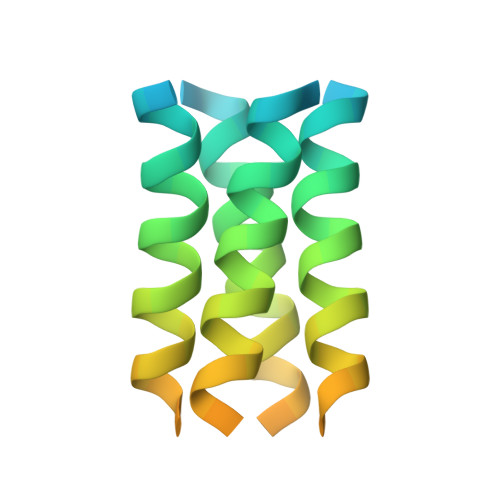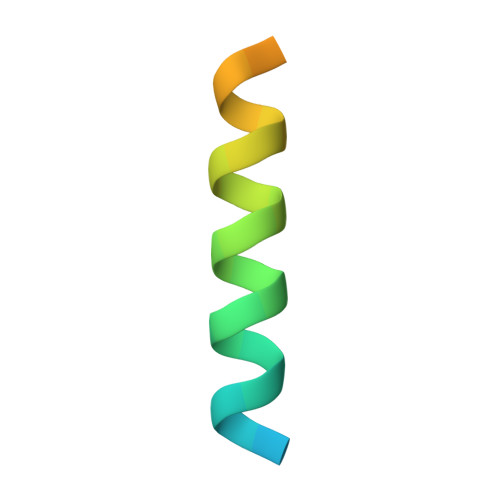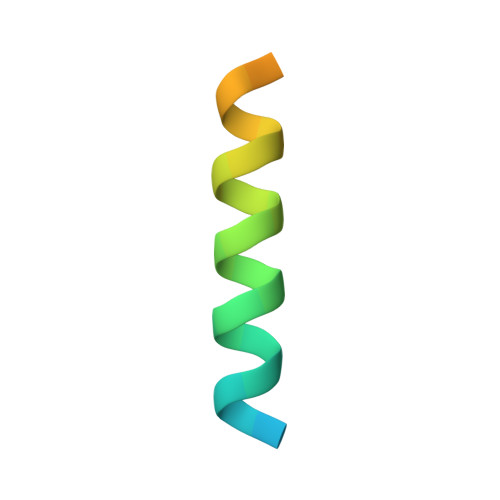Three-dimensional structure of the channel-forming trans-membrane domain of virus protein "u" (Vpu) from HIV-1
Park, S.H., Mrse, A.A., Nevzorov, A.A., Mesleh, M.F., Oblatt-Montal, M., Montal, M., Opella, S.J.(2003) J Mol Biology 333: 409-424
- PubMed: 14529626
- DOI: https://doi.org/10.1016/j.jmb.2003.08.048
- Primary Citation of Related Structures:
1PI7, 1PI8, 1PJE - PubMed Abstract:
The three-dimensional structure of the channel-forming trans-membrane domain of virus protein "u" (Vpu) of HIV-1 was determined by NMR spectroscopy in micelle and bilayer samples. Vpu(2-30+) is a 36-residue polypeptide that consists of residues 2-30 from the N terminus of Vpu and a six-residue "solubility tag" at its C terminus that facilitates the isolation, purification, and sample preparation of this highly hydrophobic minimal channel-forming domain. Nearly all of the resonances in the two-dimensional 1H/15N HSQC spectrum of uniformly 15N labeled Vpu(2-30+) in micelles are superimposable on those from the corresponding residues in the spectrum of full-length Vpu, which indicates that the structure of the trans-membrane domain is not strongly affected by the presence of the cytoplasmic domain at its C terminus. The two-dimensional 1H/15N PISEMA spectrum of Vpu(2-30+) in lipid bilayers aligned between glass plates has been fully resolved and assigned. The "wheel-like" pattern of resonances in the spectrum is characteristic of a slightly tilted membrane-spanning helix. Experiments were also performed on weakly aligned micelle samples to measure residual dipolar couplings and chemical shift anisotropies. The analysis of the PISA wheels and Dipolar Waves obtained from both weakly and completely aligned samples show that Vpu(2-30+) has a trans-membrane alpha-helix spanning residues 8-25 with an average tilt of 13 degrees. The helix is kinked slightly at Ile17, which results in tilts of 12 degrees for residues 8-16 and 15 degrees for residues 17-25. A structural fit to the experimental solid-state NMR data results in a three-dimensional structure with precision equivalent to an RMSD of 0.4 A. Vpu(2-30+) exists mainly as an oligomer on PFO-PAGE and forms ion-channels, a most frequent conductance of 96(+/- 6) pS in lipid bilayers. The structural features of the trans-membrane domain are determinants of the ion-channel activity that may be associated with the protein's role in facilitating the budding of new virus particles from infected cells.
Organizational Affiliation:
Department of Chemistry and Biochemistry, University of California, San Diego, 9500 Gilman Drive, La Jolla, CA 92093-0307, USA.


















